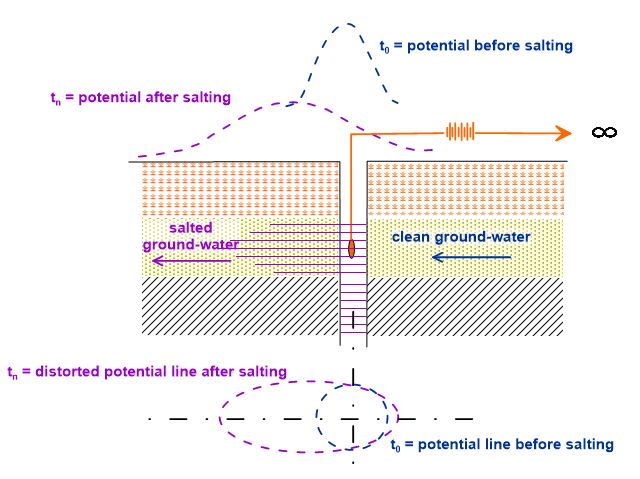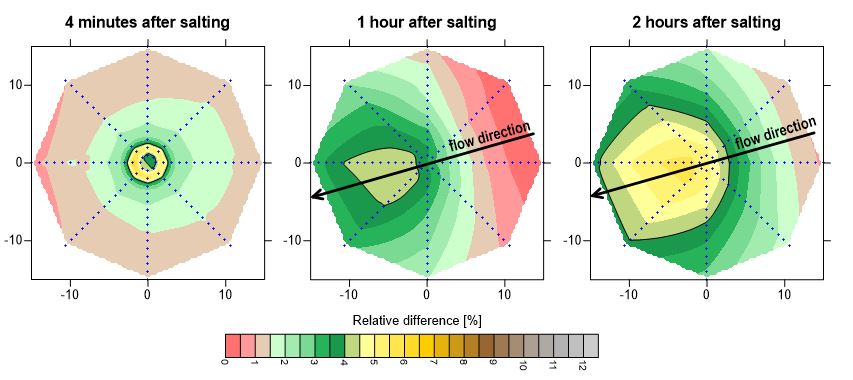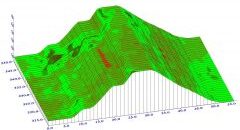Near water table monitoring wells, with geoelectrical survey the parameters of ground-water flow can be determined, thus the flow and speed of potential contamination in the soil can be defined.

The method used during the survey is the so-called equipotential lines process (“MISE-A-LA-MASSE”). The technique is based on the fact that the potential field of a point source can be determined in a homogeneous conductive material. If inhomogeneity is present in the material, the potential field is distorted in line with the inhomogeneity. In this case, the inhomogeneity is made by us, by applying oversaturated common salt solution in the impermeable layer through the monitoring well. Common salt is used as its electrical resistivity is much lower than soil or ground-water, thus its presence is well-observable.

Following the evaluation of the results, the relative changes of the electrical potential is plotted in graphical format, which determines the ground-water flow’s direction.


